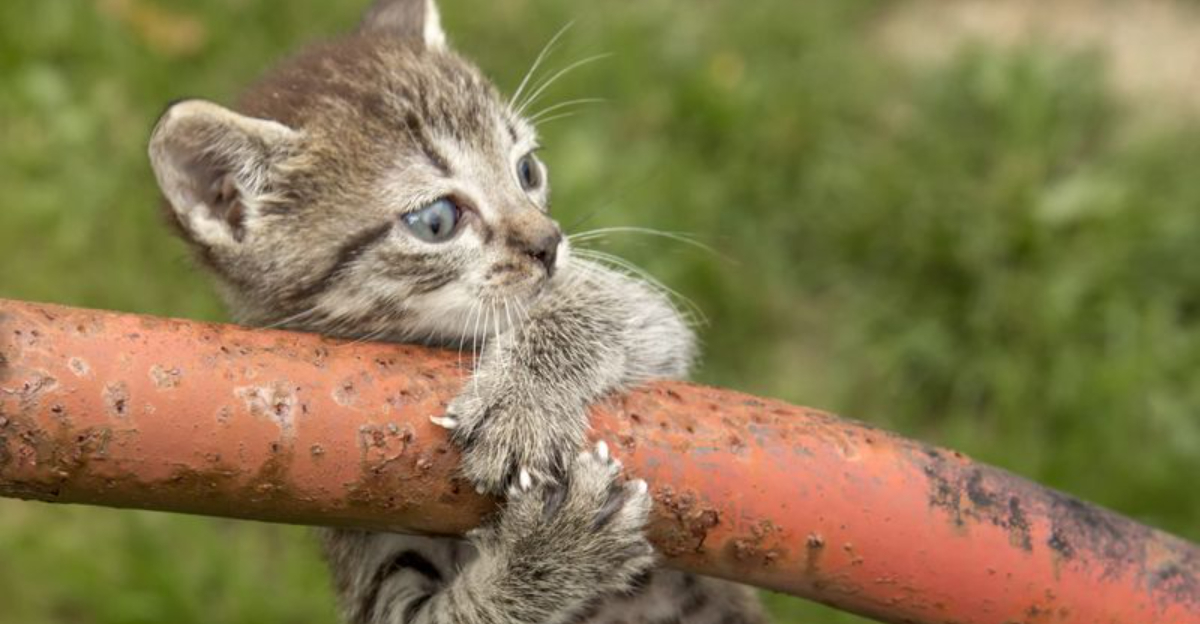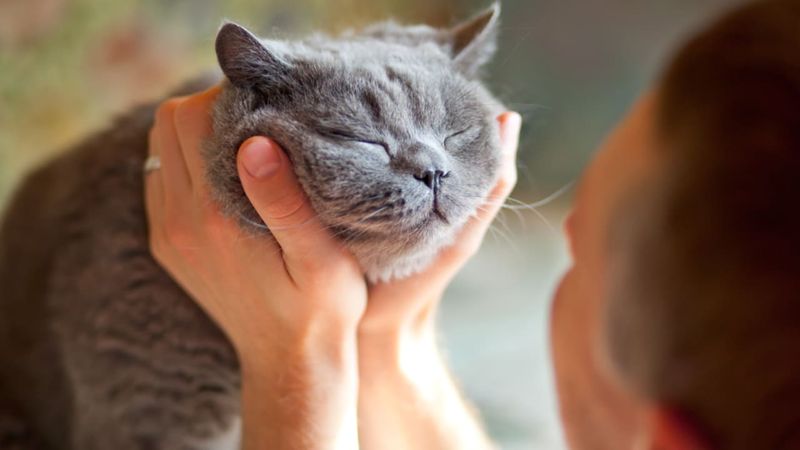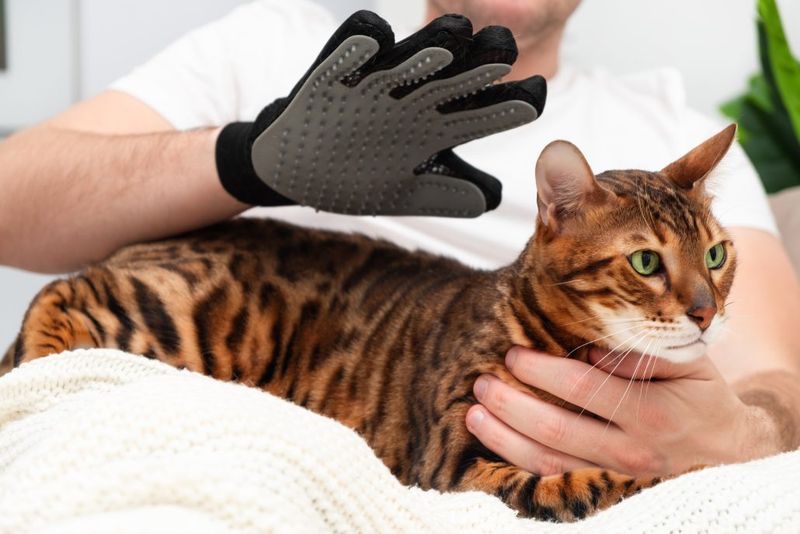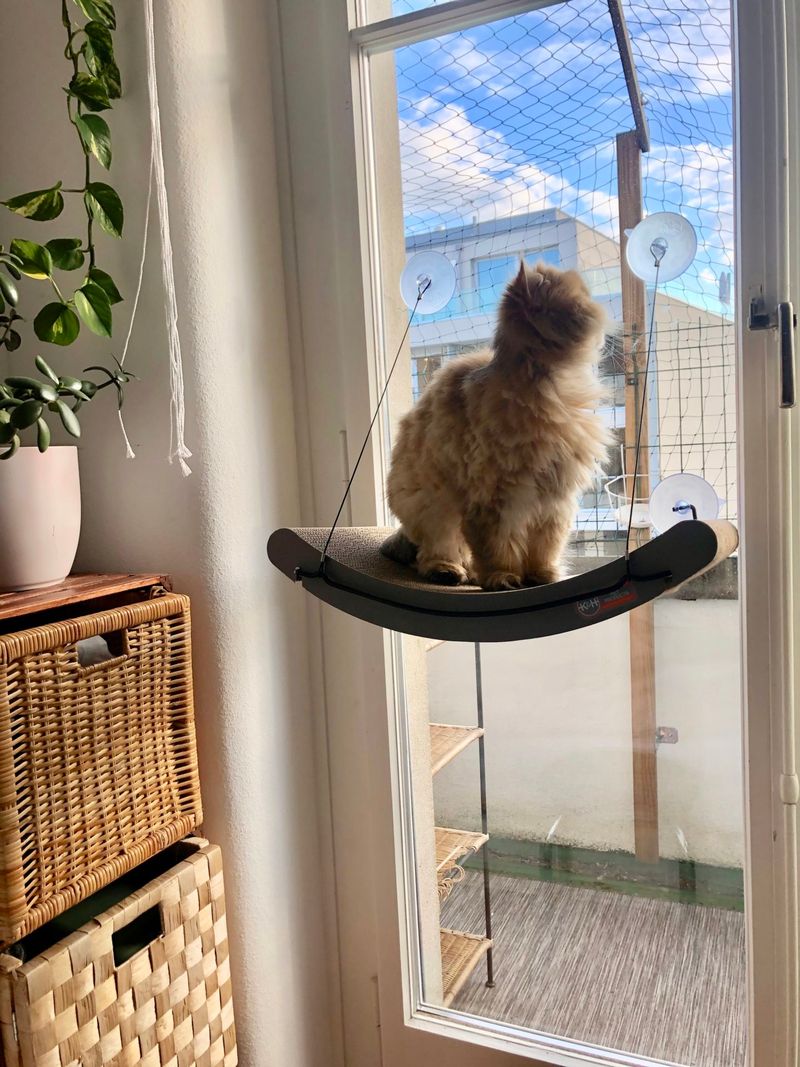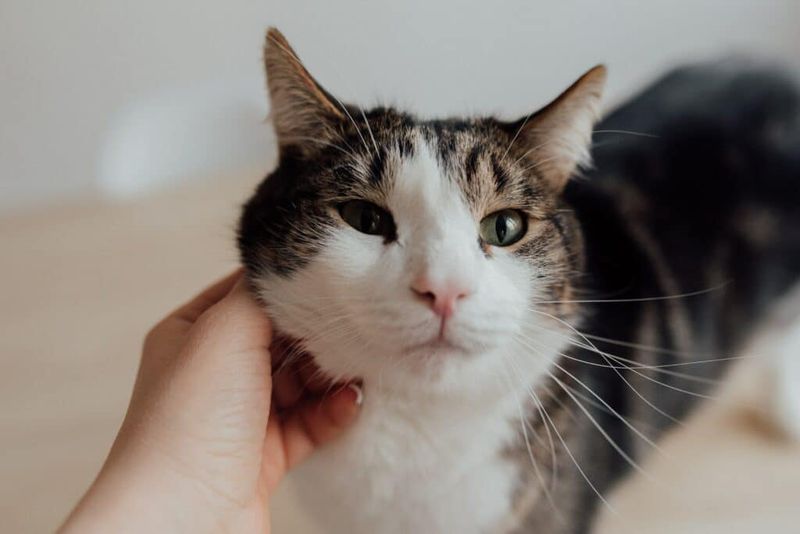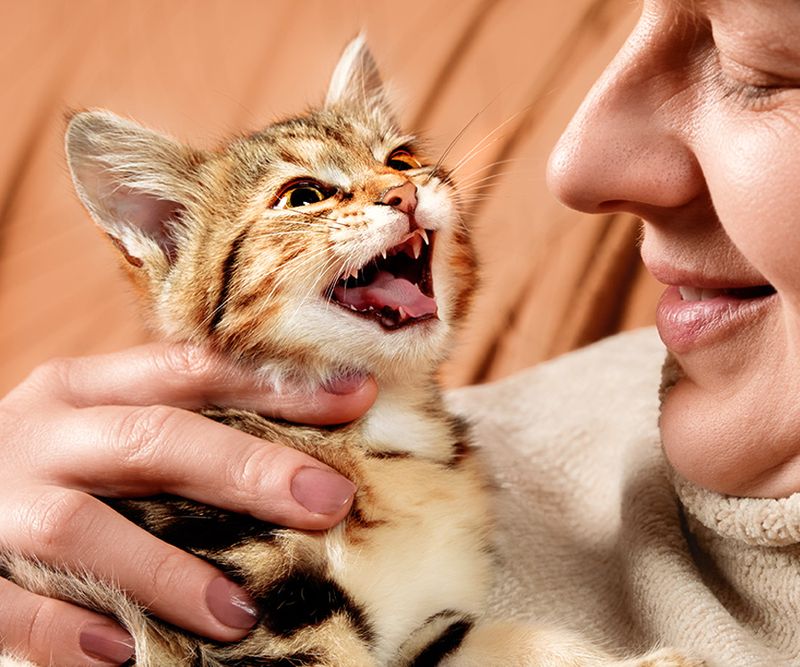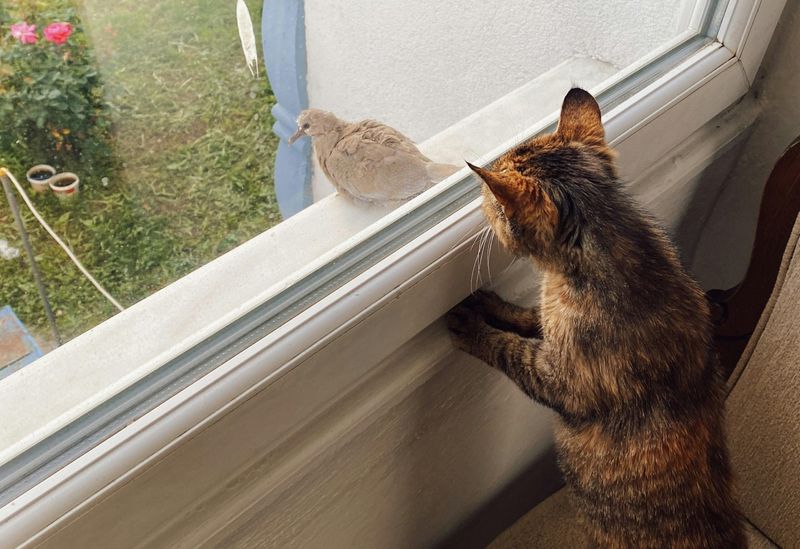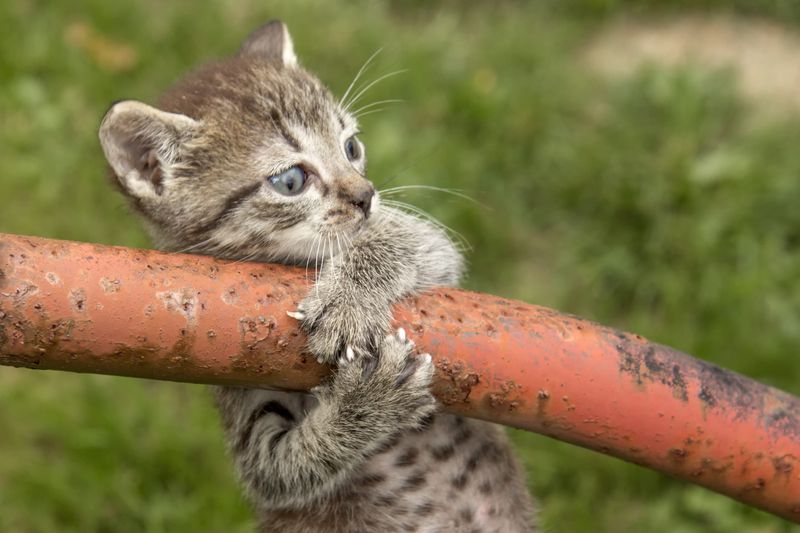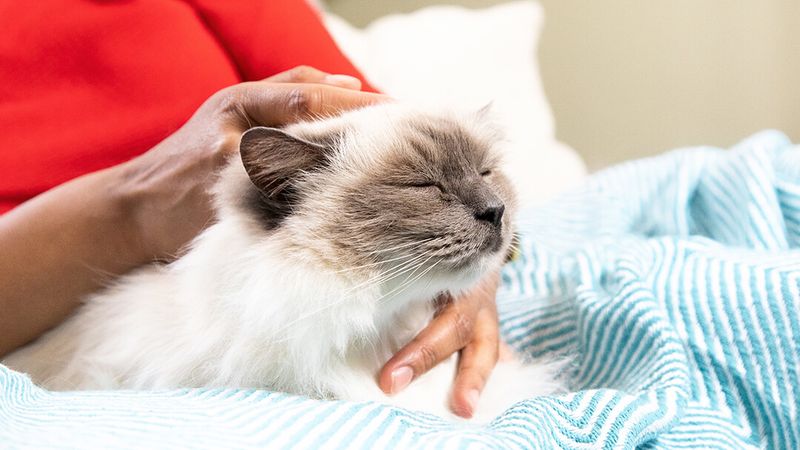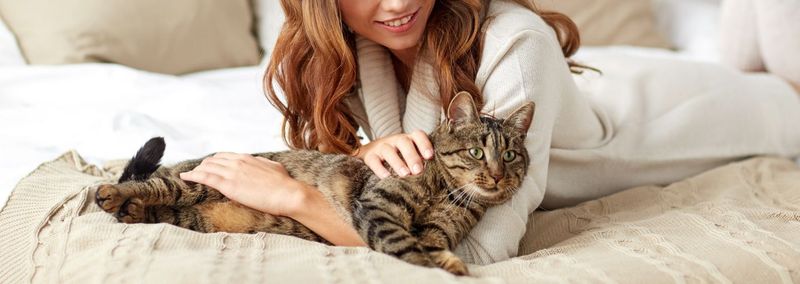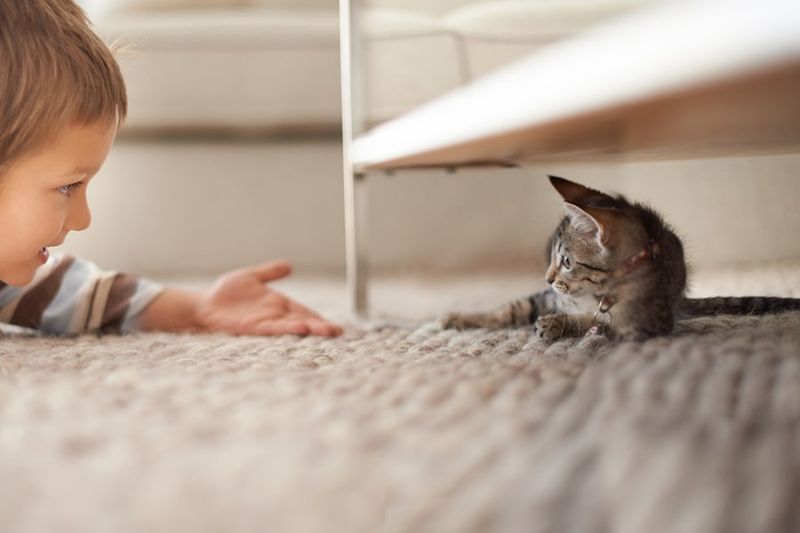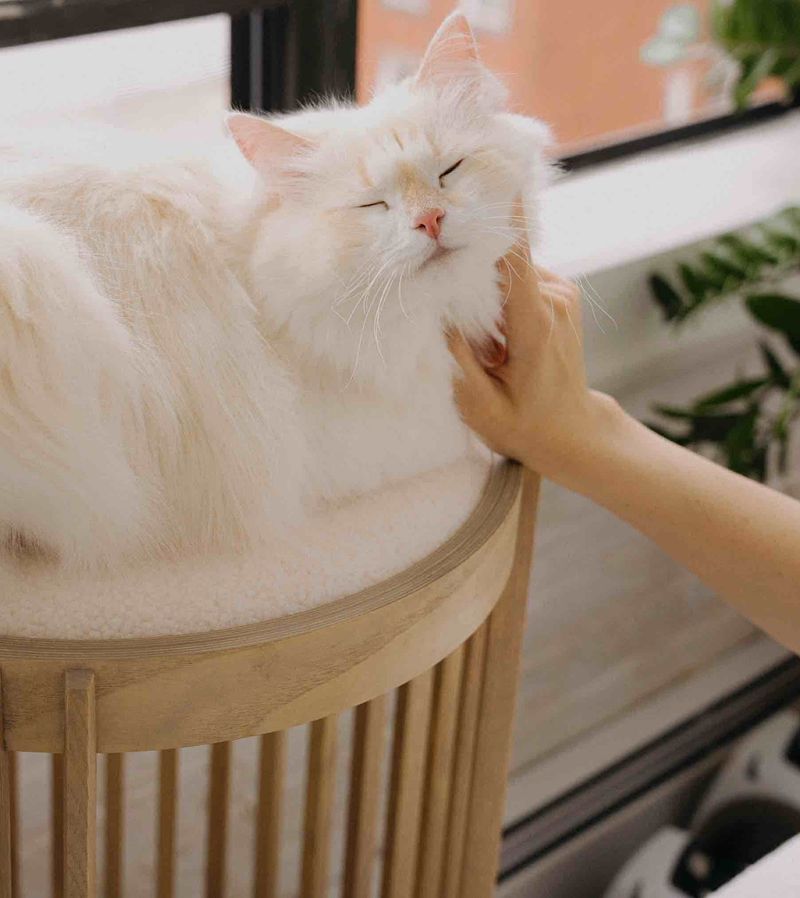📖 Table of Content:
- 1. Slow Blink Conversations
- 2. Respect Their Space
- 3. Daily Grooming Sessions
- 4. Play That Mimics Hunting
- 5. Scheduled Feeding Times
- 6. Create Vertical Territory
- 7. Gentle Head Scratches
- 8. Recognize Their Unique Voice
- 9. Quiet Reading Company
- 10. Window Watching Together
- 11. Respect Sleep Patterns
- 12. Welcome Home Rituals
- 13. Gentle Massage Techniques
- 14. Dedicated Cuddle Times
- 15. Slow Introductions To New Things
- 16. Learn Their Body Language
- 17. Use Their Name Positively
Cats may seem independent, but they crave attention and affection just like any other pet. Our feline friends have unique ways of expressing love, and they notice when we make an effort to connect with them. By adding a few simple habits to your daily routine, you can strengthen your bond with your cat and make them feel truly cherished.
1. Slow Blink Conversations
Cats communicate love through their eyes. When your furry friend gives you a slow blink, they’re essentially blowing you a kitty kiss! Return this gesture by making eye contact and slowly closing your eyes for a few seconds before opening them again.
This simple exchange builds trust and shows your cat you understand their language. Many cat behaviorists call this the “I love you” blink, and it’s one of the most direct ways to speak to your cat in their own language. Try incorporating this into your daily routine – during morning cuddles or evening relaxation time, when your cat is calm and content.
2. Respect Their Space
Giving your cat space to unwind without disturbance is one of the kindest things you can do. They’re not being distant—they’re recharging. Letting them choose when to connect builds true trust.
Create dedicated cat-only areas in your home where your pet can escape when feeling overwhelmed. A quiet shelf, a cozy corner with a bed, or even a cardboard box can serve as their sanctuary. Teach children and guests about these boundaries, too. Your cat will feel more secure knowing they have options, making them more likely to seek out your company on their terms.
3. Daily Grooming Sessions
Brushing your cat mimics the social grooming behavior they would experience in a feline family. Regular short sessions with a brush suited to your cat’s coat type strengthen your bond while keeping their fur healthy.
Most cats enjoy gentle brushing around their cheeks, chin, and base of their tail. Watch their body language to find their favorite spots. If they purr and lean into the brush, you’ve hit the sweet spot! Beyond the emotional connection, grooming helps reduce hairballs and allows you to check for any skin issues or unusual bumps that might need veterinary attention.
4. Play That Mimics Hunting
Even the most pampered house cat still has strong hunting instincts. Toys that mimic prey—like feather wands or scurrying mice—help satisfy those natural urges. Aim for two short play sessions a day, around 10–15 minutes each.
Moving toys like prey (away from your cat, along the ground, with occasional pauses) creates the most engaging experience. The erratic movements of a toy mouse or feather teaser stimulate their hunting drive. End play sessions with a “successful catch” to satisfy their predatory sequence. This mental and physical exercise reduces stress and anxiety while strengthening your bond as their hunting partner.
5. Scheduled Feeding Times
Consistent mealtimes create security in your cat’s life. Unlike free-feeding, scheduled meals allow your cat to associate you directly with providing for their needs, reinforcing your role as caretaker. Use feeding time as a bonding opportunity.
Speak softly to your cat while preparing their food, and stay nearby as they eat. Some cats feel vulnerable while eating and appreciate your protective presence. Consider puzzle feeders or food-dispensing toys for mental stimulation. These tools engage your cat’s problem-solving abilities and natural hunting instincts, making mealtime more than just about nutrition.
6. Create Vertical Territory
Cats naturally seek height for security and observation. Providing cat trees, shelves, or window perches satisfies this instinctual need and expands their territory within your home. Strategic placement matters – position climbing structures near windows or in social areas where they can observe household activities while feeling safe.
Vertical spaces allow cats to retreat from stressors like visitors or other pets while still being part of family life. Acknowledge your cat when they use these spaces with verbal praise or gentle attention. This recognition shows you understand and respect their need for elevated perspectives, making them feel seen and appreciated.
7. Gentle Head Scratches
The secret to perfect head scratches lies in understanding feline facial glands. Cats have scent glands concentrated around their cheeks, chin, and forehead that release feel-good pheromones when stimulated. Approach your cat with a relaxed hand, allowing them to initiate contact by bumping against your fingers.
Focus on the base of the ears, under the chin, and along the cheeks with gentle, slow movements. Avoid the sensitive whisker area unless your cat clearly enjoys it. Pay attention to subtle cues – purring, leaning in, or head-butting means continue, while ear flattening or tail swishing signals it’s time to stop.
8. Recognize Their Unique Voice
Believe it or not, your cat talks to you in a language they’ve created just for your relationship. Whether it’s a “feed me” meow or a “let’s play” chirp, noticing these differences shows you’re tuned into what they’re trying to say.
Respond appropriately to their vocal cues. A greeting meow might warrant a warm hello and brief petting, while an insistent dinnertime call requires food preparation. This communication loop builds trust and security. Mirroring their sounds back occasionally can create amusing “conversations” that many cats enjoy. The recognition of their unique vocal patterns makes cats feel truly seen as individuals with specific needs and desires.
9. Quiet Reading Company
Reading aloud creates perfect bonding moments with your cat. The steady rhythm of your voice combined with your stillness, creates an ideal environment for quality time without overwhelming your feline friend. Find a comfortable spot where your cat naturally likes to relax.
Your gentle voice provides comforting background noise while allowing them to set the physical boundaries. Many cats will gradually move closer, eventually settling on your lap or beside you. This activity works particularly well with shy or anxious cats who find direct interaction stressful. The predictable, calm nature of reading sessions builds trust while giving your cat the freedom to engage on their terms.
10. Window Watching Together
Cats find outdoor scenery endlessly fascinating. Creating a comfortable window perch gives them a safe way to observe birds, squirrels, and passing cars. This simple enrichment activity stimulates their mind and satisfies their curiosity about the outside world. Join your cat occasionally during their window watching sessions.
Sitting quietly beside them while they observe shows companionship without demanding interaction. Point out interesting movements or visitors to the yard with a gentle voice. Consider enhancing the experience with a bird feeder positioned within view. This creates a natural “cat TV” that provides hours of entertainment and mental stimulation.
11. Respect Sleep Patterns
Frequent napping is part of your cat’s biology. Allowing them to sleep soundly without disturbance honors their nature and shows you care about their comfort.
Create multiple sleeping spots throughout your home at varying heights and temperatures. Some cats prefer warm sunny patches during day naps but cooler spots for night sleeping. Providing these options acknowledges their natural preferences. When your cat chooses to sleep near or on you, recognize this as a significant sign of trust. They’re most vulnerable while sleeping, so this choice demonstrates their comfort and security in your presence.
12. Welcome Home Rituals
Greeting your cat consistently when returning home reinforces their importance in your life. Even after short absences, take a moment to acknowledge your feline friend before tackling other tasks. This small habit reassures them of their special place in your world.
Get down to their level for these greetings. Crouching or sitting creates a less intimidating posture that invites interaction on their terms. Let them approach you while speaking in a calm, happy voice. Notice their greeting style – some cats race to the door while others wait in a favorite spot. Honoring their preferred greeting method shows attentiveness to their individual personality and builds anticipation for your return.
13. Gentle Massage Techniques
Beyond regular petting, cats benefit from gentle massage that mimics a mother cat’s grooming. Using the pads of your fingers, apply very light pressure in circular motions along their back, shoulders, and base of tail.
Avoid the sensitive stomach area unless your cat clearly invites it. Watch for signs of enjoyment like purring, kneading, or relaxed posture. If your cat stretches out or presents a particular area, they’re directing you to continue there. These sessions improve circulation and can help identify any tender spots that might indicate health issues. Keep sessions short initially – just 2-3 minutes – gradually extending as your cat becomes accustomed to this deeper touch.
14. Dedicated Cuddle Times
Setting aside specific times for focused attention shows your cat they’re a priority. Morning or evening cuddle sessions create dependable routines that cats appreciate. The consistency builds anticipation and security in your relationship. Follow your cat’s lead during these times. Some prefer sitting beside you with minimal touching, while others enjoy full-contact lap snuggles.
Respecting their preference demonstrates your attentiveness to their unique personality. Keep distractions at bay during these special moments. Putting down your phone and being fully present communicates that this time is exclusively for connecting with your feline companion – a powerful message in our busy, distraction-filled lives.
15. Slow Introductions To New Things
Cats thrive on familiarity and routine. When introducing new items – furniture, toys, carriers, or even people – a gradual approach shows respect for their cautious nature. Allow your cat to investigate changes at their own pace without forcing interaction.
For new objects, try placing them in a neutral area first. Let your cat’s curiosity lead the way as they sniff, circle, and eventually touch the item. Positive associations help too – try placing treats near new objects or using calming pheromone sprays. This patient approach reduces stress and builds trust. Your cat learns that you’ll protect them from overwhelming situations, strengthening their sense of security in your care.
16. Learn Their Body Language
Your cat may not use words, but their body says it all. From tail swishes to ear flicks, these small signals reveal how they’re feeling. Paying attention to their body language shows you’re truly in tune with them.
Watch for the slow blink, kneading paws, and upright tail with a slight curve – all signs of a happy, confident cat. Conversely, flattened ears, puffed tail, or crouched posture signals discomfort that deserves immediate respect. Responding correctly to these signals builds tremendous trust. Your cat learns that you understand their communications and will respect their boundaries, creating a foundation of mutual understanding.
17. Use Their Name Positively
Cats recognize and respond to their names, especially when used consistently with positive associations. Incorporate their name into daily praise, greetings, and before pleasant experiences like treats or play. This creates powerful positive connections. The tone matters significantly. Use a higher, friendlier pitch when calling their name, as cats respond better to these frequencies.
Avoid using their name during veterinary visits, medication, or other potentially negative experiences. Some cats even respond to nicknames or variations of their name that you use affectionately. This recognition demonstrates their attunement to your voice patterns and the special bond you share through personalized communication.
